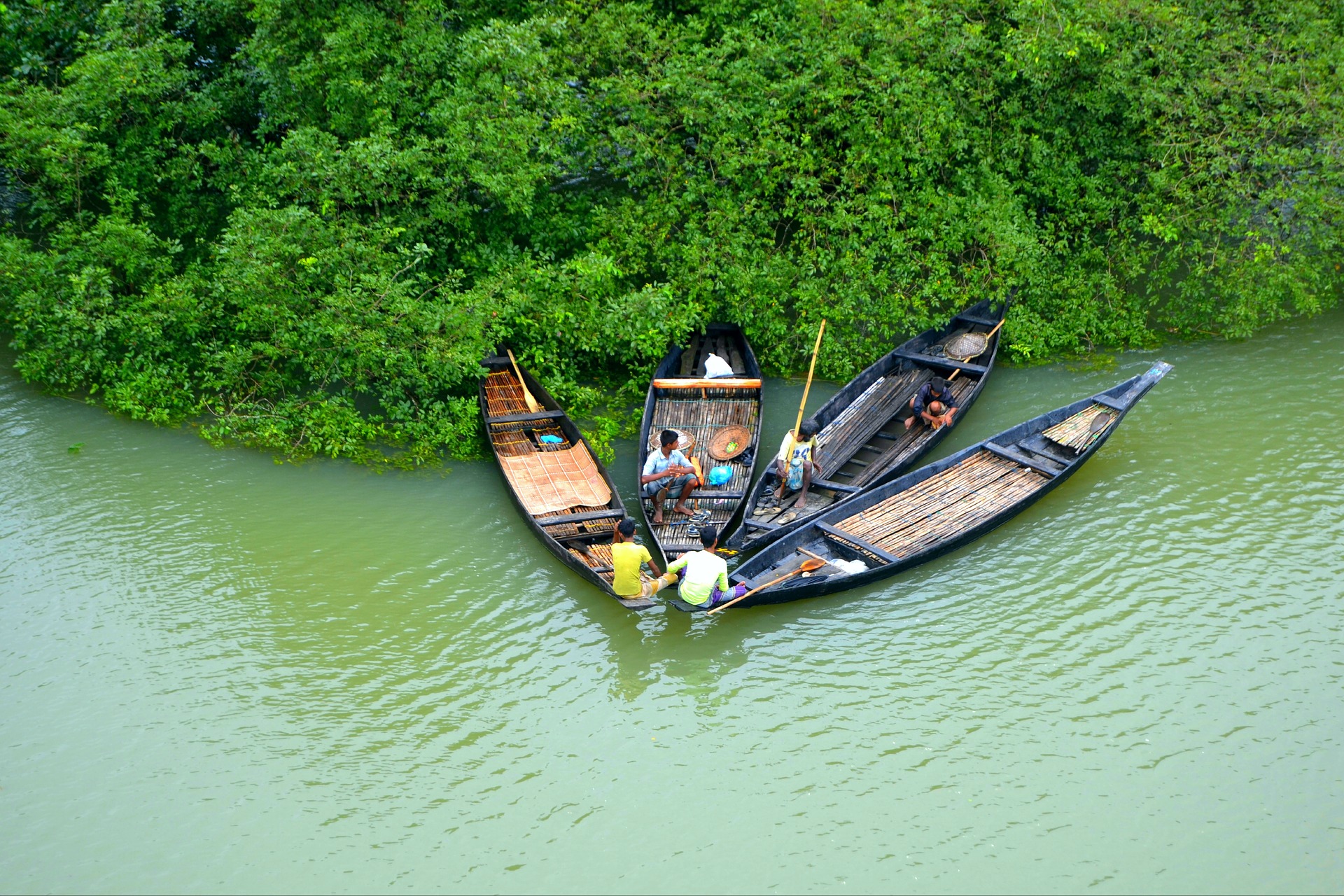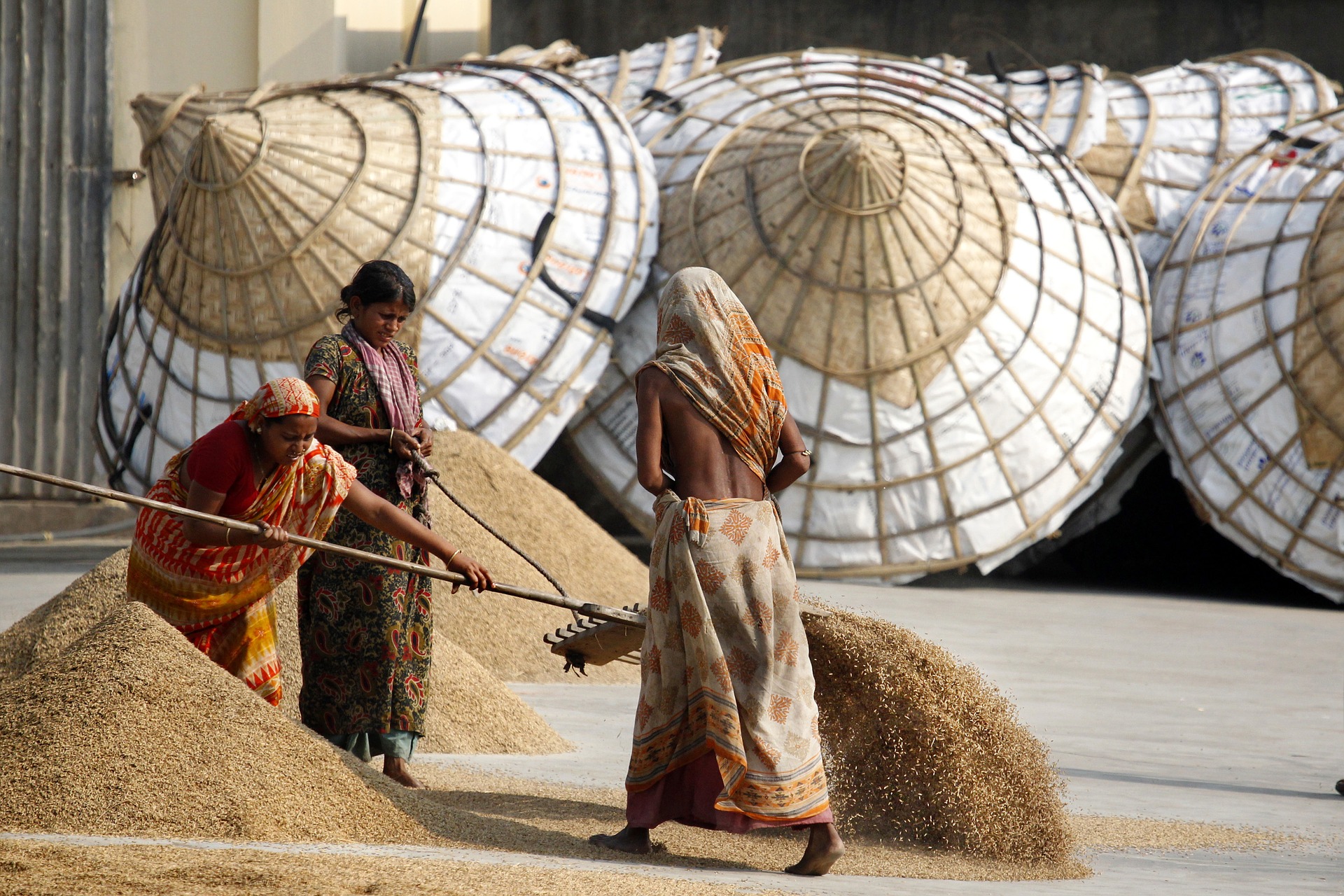
Whether Bangladesh is an underdeveloped country or not, almost all the features of an underdeveloped country exist in Bangladesh. However, at present, there are signs of change in the economic landscape of Bangladesh.
Low per capita income 4 The per capita income of the people of Bangladesh was 38 US dollars in 2001 and 520 US dollars in 2006. Per capita income is much higher in developed countries. For example, the per capita income for Switzerland in 2004 was ৮ 48,375 and for the United States it was ৮৮ 39.63. Compared to that, the per capita income of the people of Bangladesh is much lower than that of the developed countries.
High dependence on agriculture and about 75% of the people in Bangladesh are directly or indirectly dependent on agriculture. In 2005-06, the contribution of agriculture to the national income was about 16.98% and the growth rate was 5.23%.
Despite being an underdeveloped agricultural system and an agricultural country, the agricultural system of Bangladesh is very underdeveloped. The agriculture of this country still has traditional farming methods, land fragmentation, improved seeds, fertilizers, lack of irrigation, dependence on monsoon winds etc.
Backwardness in industry: Bangladesh is very backward in industry now. Although different governments took initiatives to set up industries at different times, it was not implemented properly. The contribution of industry sector was 16.06% in FY 2005-06. In the fiscal year 2007-08, it increased to 17.89%, which is much less than the developed countries of the world. The contribution of industry in Japan and the United States is much higher.
The high rate of population growth and the rate of population growth in Bangladesh is very high. In 2004, the population growth rate in the country was 1.42%. On the other hand, the rate of population growth in developed countries is very low. For example, the average population growth rate in the European continent is -0.2% and the population growth rate in Latvia in Europe is -5%. Therefore, the rate of population growth in developed countries is much lower than in Bangladesh.
Unemployment problem and unemployment problem of this country is very obvious. The rate of savings and capital formation of this country is lower than the population growth. As a result, adequate investment is not possible. Due to this, the problem of unemployment has not improved much. But the government
And with the introduction of EPZ in the private sector, it is hoped that the unemployment problem in this country will be reduced in the future. In developed countries The amount of savings and investments is higher. For this reason, there is no problem of unemployment in their country.
The standard of living is very low and the standard of living of the people of this country is very low. But now the standard of living has improved a bit. In 2004, the average life expectancy increased to 74.4 years for males and 65.7 years for females. Drinking water accounted for 96.3% and hygienic toilet users stood at 41.22%. On the other hand, the standard of living in developed countries is very good. However, the standard of living of the people of Bangladesh is steadily improving.
According to the 2001 census, the literacy rate in Bangladesh is only 36%. But this rate is much higher in developed countries. However, the rate of education in Bangladesh is steadily rising.
Lack of skilled manpower and large population in Bangladesh, but there is a significant shortage of skilled manpower. Various activities have been taken to increase the efficiency of the manpower of this country. However, in developed countries, the rate of education and training opportunities are higher. For this reason, the manpower of developed countries is much more efficient than that of Bangladesh.
Food problems and malnutrition and the people of Bangladesh are now suffering from food problems and malnutrition. Because the rate at which the population is growing in this country, food production is not increasing. In the financial year 2006-07, the production of grain was estimated at 273.7 lakh metric tons. About 60% of the animal meat in our daily diet comes from fish. Although initiatives have been taken to reduce food problems and malnutrition in the country, the growing population pressure is thwarting those initiatives. On the other hand, there is no problem of food problem and malnutrition in developed countries. "

Incomplete use of natural and human resources and natural and human resources are not being fully utilized in this country. However, the discovery and use of natural resources has increased more than ever before. In order to develop human resources, various government and non-government initiatives have been taken in various activities including education, health, family welfare, women and child development, youth and sports development. Compared to this, developed countries are much more advanced. Because the amount of unused natural and human resources in developed countries is very insignificant.
Very weak in weak economic structure and in the economic structure of Bangladesh. However, the development of economic and social infrastructure of this country is slowly gaining momentum. Nevertheless, the economic structure of Bangladesh is much lower than any other developed country in the world.
Foreign trade deficit and Bangladesh's foreign trade deficit is huge. At present the amount of this deficit is decreasing. In developed countries, foreign trade surpluses tend to be higher. For this reason, developed countries have an impact on underdeveloped and developing countries. However, in the near future, Bangladesh is expected to overcome the adversity of foreign trade.
Dependence on foreign aid and about 49% of the Bangladesh Development Plan is met by foreign loans, aid and grants. Such over-reliance on foreign aid is a serious obstacle to our development. Developed countries do not accept foreign aid. Only take foreign loans if they are in a difficult situation.
Political instability and unstable politics are major obstacles to Bangladesh's economic development. The economic development of this country is being severely hampered due to the lack of a conducive democratic environment and political conflict between the ruling party and the opposition. In developed countries, on the other hand, the political situation is always in balance. It goes without saying that there is no conflict in the political corner.

Bangladesh is a developing country. Because the economy of this country has become dynamic and the growth rate is gradually increasing. So far, five five-year plans have been formulated for the development of Bangladesh. Although these plans have not been fully implemented, they have made significant progress in the country's economy and have bright prospects for future development. So Bangladesh is undoubtedly a developing country at present.